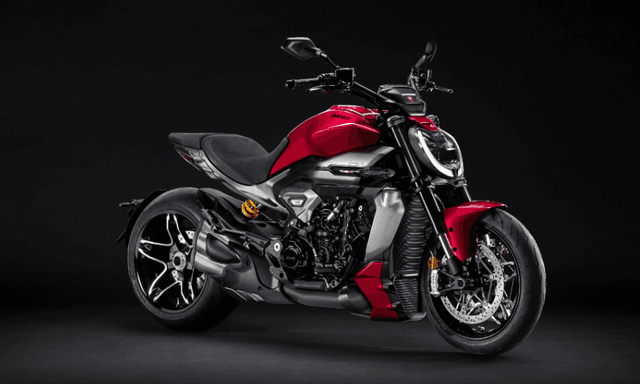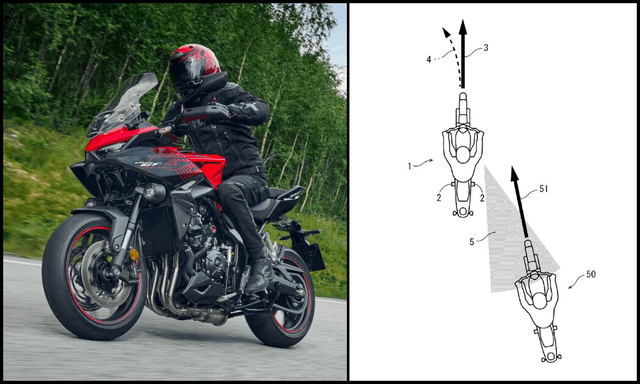Intel CEO Says 20% Of The 'Bill Of Materials' Cost Of Cars To Be Chips By 2030

- Gelsinger said that chips in cars will increase by 5 times in 9 years
- He spoke about how MobileEye ADAS is being used by Mahindra
- He also launched the new Moovit robotaxi in Germany
At the IAA Mobility conference, Intel's CEO Pat Gelsinger revealed that by 2030 cars led by electric vehicles and autonomous vehicles will have 5 times more semiconductors in 2030. Right now (data based on 2019 metrics), according to Intel's CEO, semiconductors comprise 4 per cent of the bill of materials of the cost of a car, but that number will rise to 12 per cent by 2025 and by 2030 that number will rise to 20 per cent. Gelsinger characterised cars as computers on wheels which is an ongoing process. He also added that the total addressable market for automotive chipsets will be $115 billion by 2030, which will be 11 per cent of the semiconductor market.
Also Read: How Global Semiconductor crisis impacts the automotive industry
Gelsinger revealed something that's already been indicated by Intel, that it is making new foundries for the manufacturing of cutting-edge semiconductors so that chip supply is not hampered by geopolitical issues something that's been witnessed with the US-China trade war with Taiwan being the home of the world's largest contract chipmaker TSMC and it being right next to China. Gelsinger highlighted that in 1990, Europe had 44 per cent of global chip-making capability which will go down to 9 per cent by the end of 2021. Intel is working with the EU to reverse that trend by it making two new fabs in Europe which will expand to eight fabs with an investment of 80 billion euros over the decade.

The main highlight of the presentation was scale of automotive chips in the future
Intel feels this will ensure that Europe doubles its chip-making capabilities to 20 per cent by 2030. It is also expanding its Ireland facility and its two new fabs will be announced by the end of the year. Gelsinger pitched the newly formed Intel Foundry Services (IFS) - and said that its Ireland facility will be making Intel 16 node chips which will help counter the global chipset shortage, something which automakers can leverage.
Gelsinger pitched adapting older chip designs that work with cars on newer manufacturing techniques, something that IFS will provide. Intel will open up its IP libraries for its customers which includes automotive makers. It touted partners like Daimler, BMW, Volkswagen, and Bosch.

Mahindra is using the Intel MobileEye ADAS system in the XUV 700
Gelsinger also pitched MobileEye, the autonomous driving company Intel acquired in 2017 which serves a whopping 88 million cars on the road and is the defector market leader. Gelsinger also pointed out that the newly launching MobileEye ADAS stack has been tailored for markets like India with it coming on the Mahindra XUV 700.
"I remember the first time in India, in Delhi, and the car pulled up at a major intersection and I believe every form of transportation since the time of Christ was represented at the intersection. You had rickshaws, bicycles, oxcarts and everything else. What a crazy place to drive? And we also see India as one of the least penetrative markets for these safety technologies. 17 accident-related deaths per hour or one death per 3 and half minutes," he said highlighting the issue.
Gelsinger stated that India has 17 road deaths per hour and accounts for 11 per cent of the global road accident deaths with it having 1 per cent of the cars on the planet. Most importantly, the Intel CEO drew attention to the fact that India was the most inaccessible market for ADAS equipped vehicles in the world mostly due to cost issues.
"We see ADAS features can be adopted, they are now cost-effective, they can be broadly deployed, they need to be trained for the environment. A rickshaw hasn't been seen on the Munich streets, so when you go there, a few things we need to learn and train but Mahindra & Mahindra we are excited to be bringing the first car that has adopted with the advanced ADAS capability to the Indian marketplace," Gelsinger said.
"We have an image of Mahindra's beautiful affordable SUV now being launched with MobileEye inside. It is cost-effective for the India price sensitive market but game changing as well for the market. An example of how MobileEye is industry leading in driver assistance, but it has to be mass deployable at scale," said the new Intel CEO who believes this could enhance road safety in India by 56 per cent.

Intel also announced the first robotaxi service in Germany with moovit
Gelsinger added Intel is also working on a mathematical model which will tune ADAS and autonomous capabilities for different markets with different driving cultures.
Gelsinger also announced the first electric robotaxi service in Germany called moovitAV with the MobileEye drive system enabling level 4 autonomous capability that comes with LiDARs, cameras, radars and MobileEye level 4 ECU which includes the next generation IQ chips, hardware and software.
Latest News
 car&bike Team | Dec 29, 2025JSW MG Motor India Extends Assured Buyback Plan To 5 YearsMG has expanded its EV buyback programme, which is also offered for commercial MG ZS EV owners.1 min read
car&bike Team | Dec 29, 2025JSW MG Motor India Extends Assured Buyback Plan To 5 YearsMG has expanded its EV buyback programme, which is also offered for commercial MG ZS EV owners.1 min read car&bike Team | Dec 29, 2025Ducati XDiavel V4 Launched In India At Rs 30.89 LakhThe XDiavel V4 sits as a cruiser in the Diavel range and will be sold alongside the standard model.1 min read
car&bike Team | Dec 29, 2025Ducati XDiavel V4 Launched In India At Rs 30.89 LakhThe XDiavel V4 sits as a cruiser in the Diavel range and will be sold alongside the standard model.1 min read car&bike Team | Dec 28, 2025Nissan Gravite MPV Spied Testing Yet Again Ahead Of Jan 2026 DebutNissan’s subcompact MPV will share its underpinnings with the Renault Triber.1 min read
car&bike Team | Dec 28, 2025Nissan Gravite MPV Spied Testing Yet Again Ahead Of Jan 2026 DebutNissan’s subcompact MPV will share its underpinnings with the Renault Triber.1 min read car&bike Team | Dec 27, 2025Honda Patents Steering Assist Tech For MotorcyclesHonda patents a steering assist concept that subtly intervenes during blind-spot risks.1 min read
car&bike Team | Dec 27, 2025Honda Patents Steering Assist Tech For MotorcyclesHonda patents a steering assist concept that subtly intervenes during blind-spot risks.1 min read Jafar Rizvi | Dec 27, 2025Listed: Car Manufacturers That Will Hike Prices From January 2026Based on the announcements made so far, the price increase across car models is expected to range between 2 and 3 per cent.3 mins read
Jafar Rizvi | Dec 27, 2025Listed: Car Manufacturers That Will Hike Prices From January 2026Based on the announcements made so far, the price increase across car models is expected to range between 2 and 3 per cent.3 mins read Jaiveer Mehra | Dec 26, 2025India-Spec New Renault Duster Teased Ahead Of Jan 26 DebutA new teaser video provides brief glimpses of the upcoming all-new SUV which seems to get some notable styling differences over its global sibling.1 min read
Jaiveer Mehra | Dec 26, 2025India-Spec New Renault Duster Teased Ahead Of Jan 26 DebutA new teaser video provides brief glimpses of the upcoming all-new SUV which seems to get some notable styling differences over its global sibling.1 min read
 Jafar Rizvi | Dec 24, 2025MG Windsor EV 38 kWh Long-Term Report: IntroductionThe Windsor EV has joined our garage, and before it settles into daily duty, I took it out to get a sense of what living with an electric car is like.4 mins read
Jafar Rizvi | Dec 24, 2025MG Windsor EV 38 kWh Long-Term Report: IntroductionThe Windsor EV has joined our garage, and before it settles into daily duty, I took it out to get a sense of what living with an electric car is like.4 mins read Seshan Vijayraghvan | Dec 23, 20252026 Kia Seltos Review: Formula Is Spot On, But Is The Timing Right?The 2nd-gen Kia Seltos has arrived, but it has the challenge of facing strong rivals like the Victoris and Sierra. The question is simple - Does it still have what it takes?9 mins read
Seshan Vijayraghvan | Dec 23, 20252026 Kia Seltos Review: Formula Is Spot On, But Is The Timing Right?The 2nd-gen Kia Seltos has arrived, but it has the challenge of facing strong rivals like the Victoris and Sierra. The question is simple - Does it still have what it takes?9 mins read car&bike Team | Dec 26, 2025Tata Punch EV Long-Term Second Report: Highway Performance, Pros & ConsAfter a week of living with the Tata Punch EV Long Range—including a proper Mumbai-Nashik highway test—we've learned what this little electric SUV is really made of.1 min read
car&bike Team | Dec 26, 2025Tata Punch EV Long-Term Second Report: Highway Performance, Pros & ConsAfter a week of living with the Tata Punch EV Long Range—including a proper Mumbai-Nashik highway test—we've learned what this little electric SUV is really made of.1 min read Seshan Vijayraghvan | Dec 22, 20252026 Tata Harrier & Safari 1.5 Hyperion Review: By The Power Of Petrol!The new Tata Harrier and Safari petrol packs a new 1.5-litre TGDI Hyperion engine, but is it an ideal alternative to the diesel version?7 mins read
Seshan Vijayraghvan | Dec 22, 20252026 Tata Harrier & Safari 1.5 Hyperion Review: By The Power Of Petrol!The new Tata Harrier and Safari petrol packs a new 1.5-litre TGDI Hyperion engine, but is it an ideal alternative to the diesel version?7 mins read Bilal Firfiray | Dec 19, 2025Maruti Suzuki e-Vitara Review: Worth The Wait?After a long wait, the first-ever electric Maruti Suzuki is here. It’s the e-Vitara, and it comes with a few promises. But arriving this late, is it worth the wait? Or is it a case of too little, too late?9 mins read
Bilal Firfiray | Dec 19, 2025Maruti Suzuki e-Vitara Review: Worth The Wait?After a long wait, the first-ever electric Maruti Suzuki is here. It’s the e-Vitara, and it comes with a few promises. But arriving this late, is it worth the wait? Or is it a case of too little, too late?9 mins read










































































































































